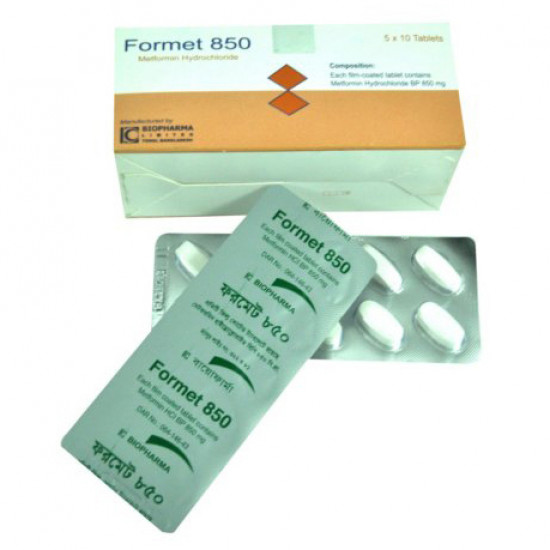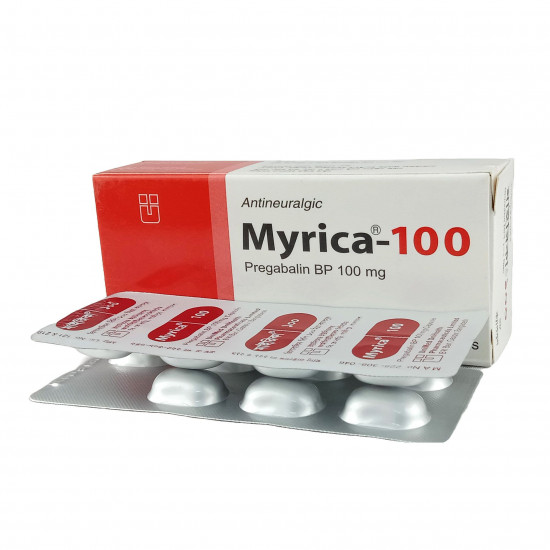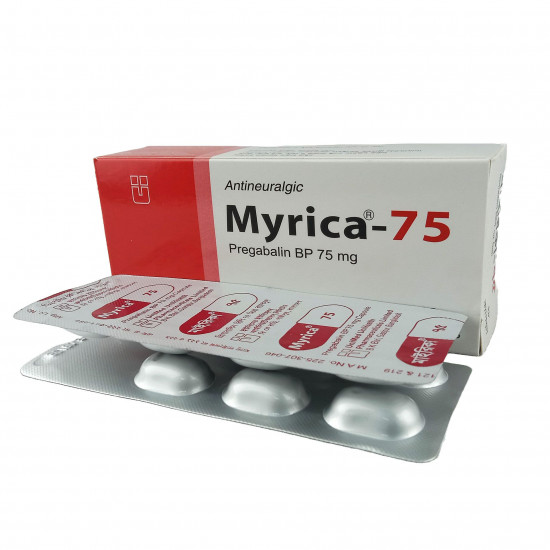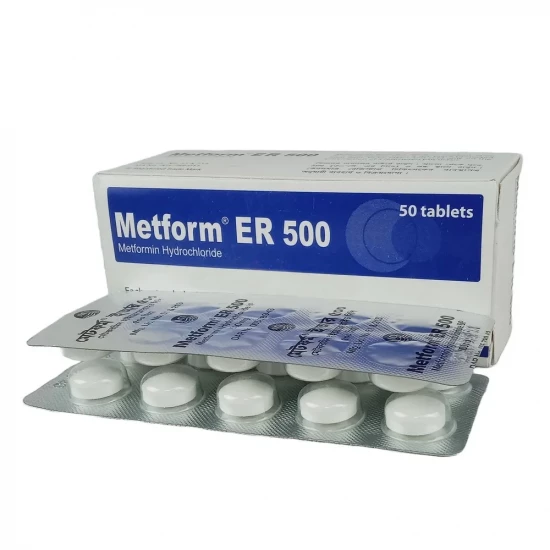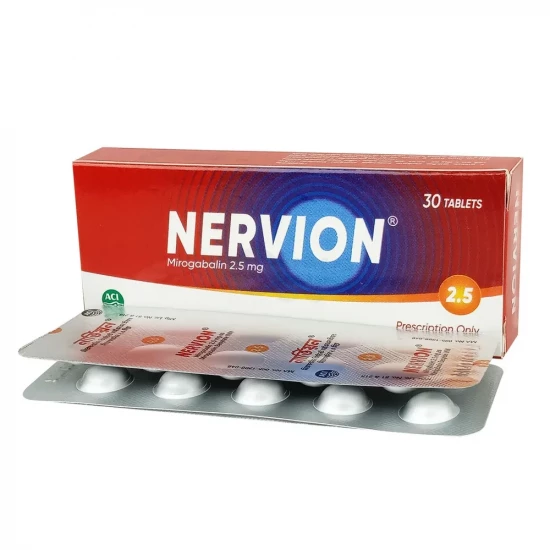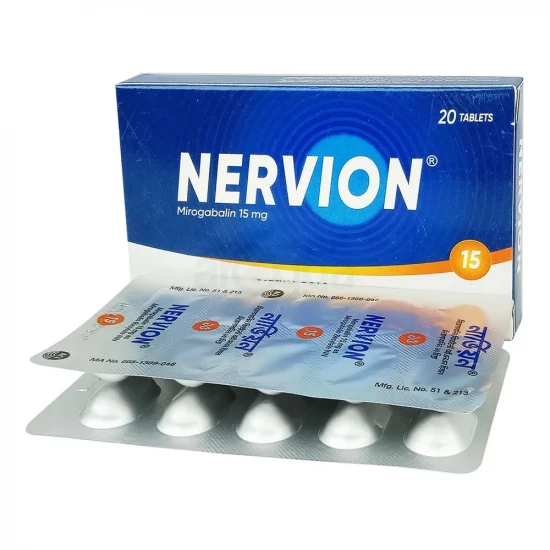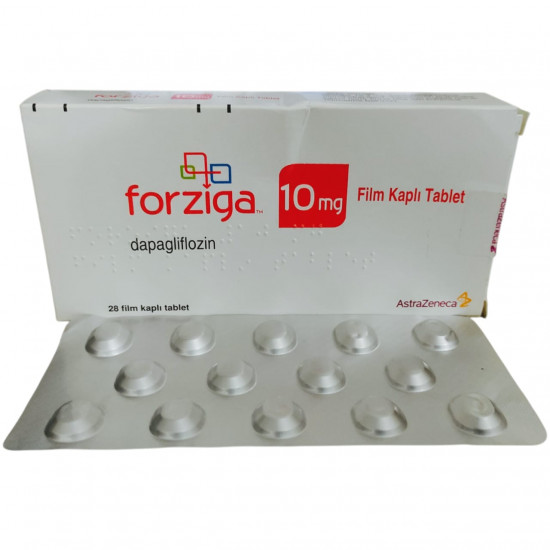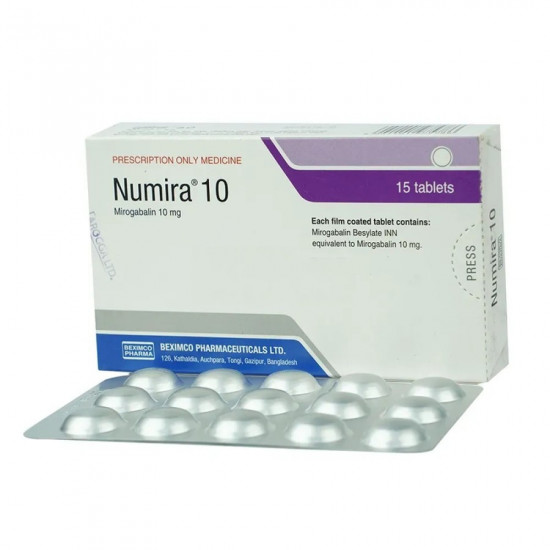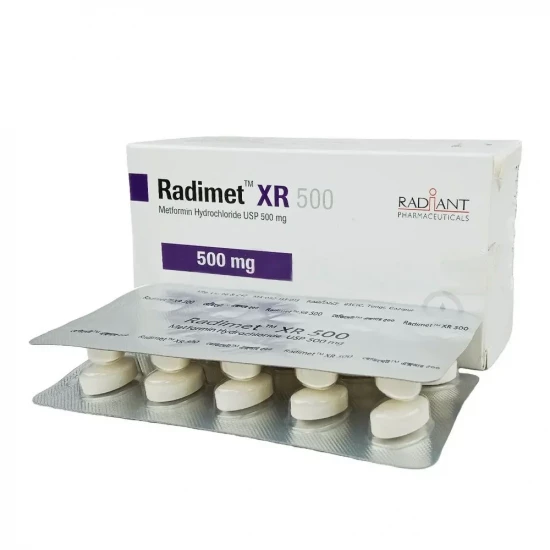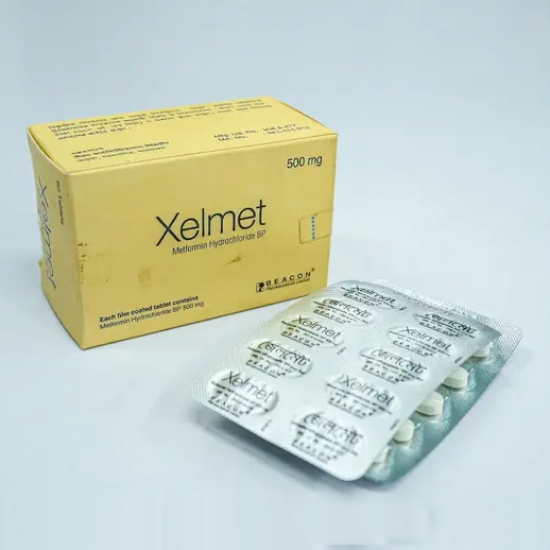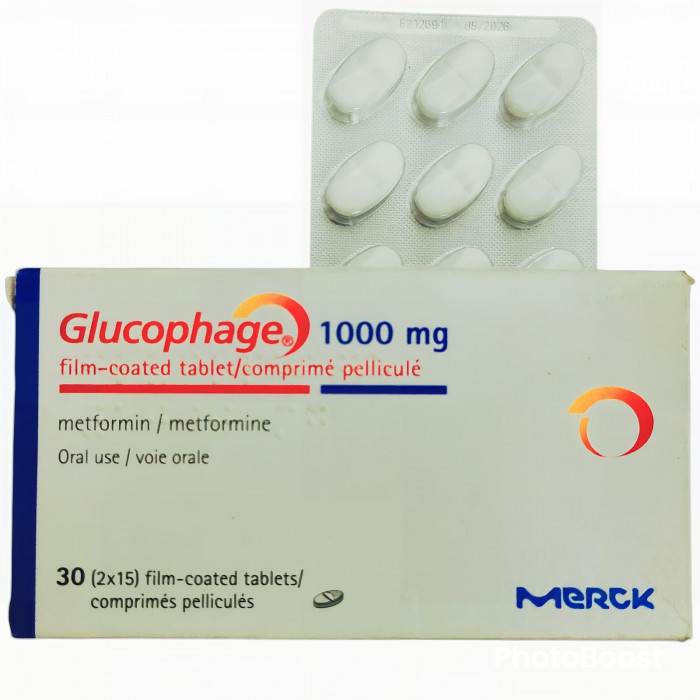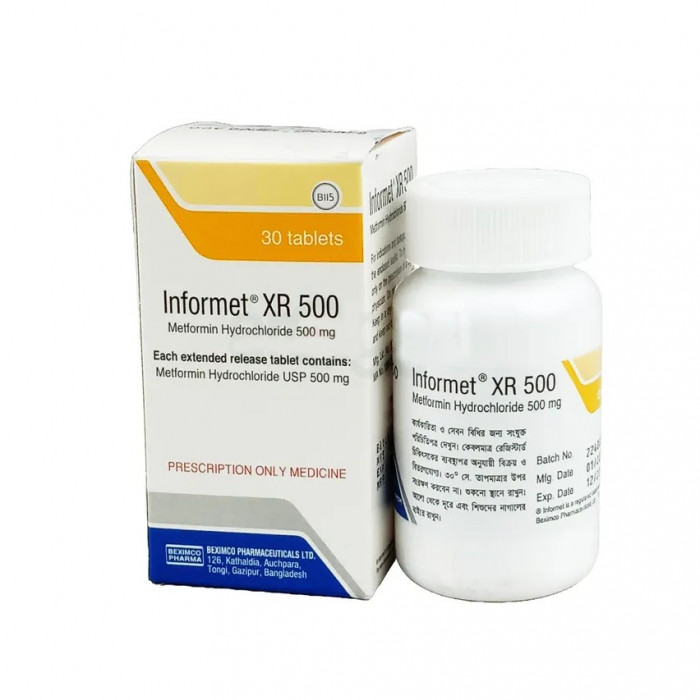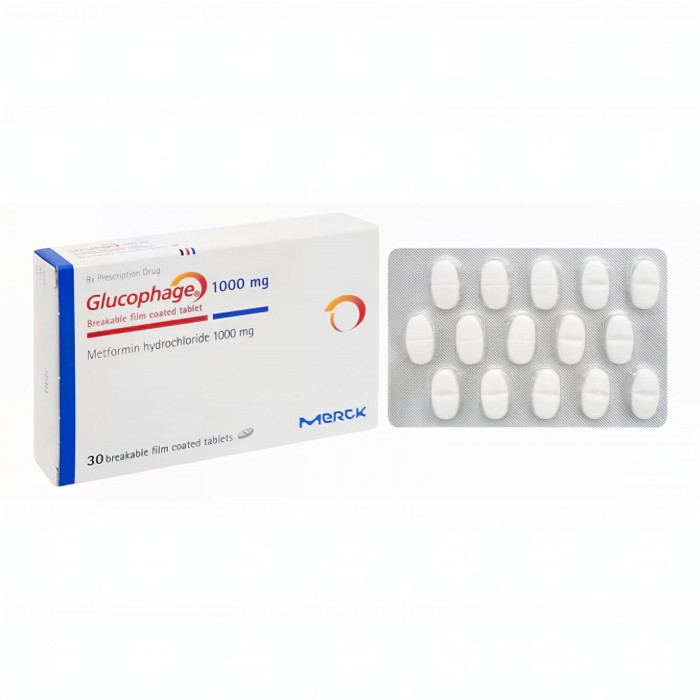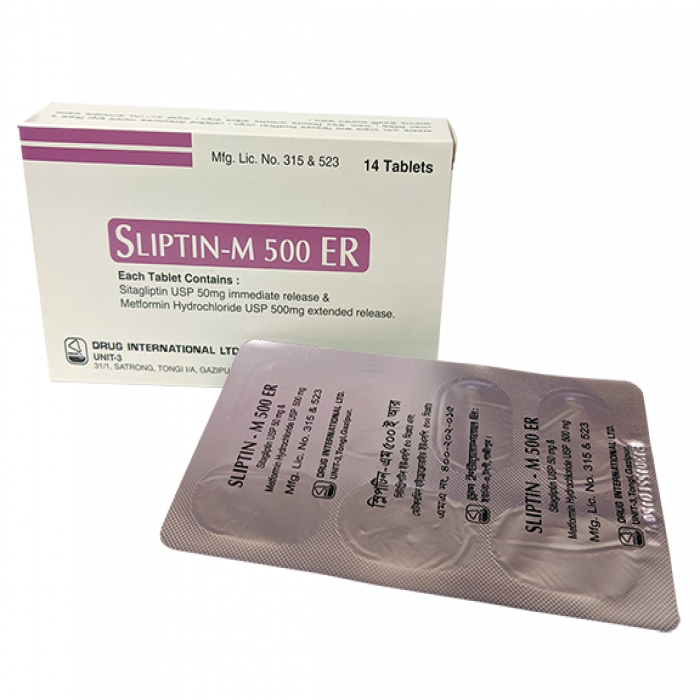
✔ 100% Authentic Product
👁️ Currently Viewing 1079
✅ Description:
Indications
This is indicated as an adjunct to diet and exercise to improve glycemic control in adults with type 2 diabetes mellitus when treatment with both sitagliptin and metformin is appropriate. Important limitations of use:
This should not be used in individuals with type 1 diabetes or to treat diabetic ketoacidosis because it is ineffective in these cases.
This has not been examined in people who have had pancreatitis in the past. It's unclear whether individuals who have had pancreatitis in the past are more likely to develop pancreatitis while using This.
Pharmacology
The tablet combines two antihyperglycemic drugs with complementary mechanisms of action to improve blood sugar control in patients with type 2 diabetes. Sitagliptin, a dipeptidyl peptidase 4 (DPP4) inhibitor, and metformin HCl, a member of the biguanide class . Sitagliptin is a dipeptidyl peptidase 4 (DPP4) inhibitor that is believed to work in patients with type 2 diabetes by delaying the inactivation of the hormone incretin. Incretin hormones, including glucagon-like peptide 1 (GLP1) and glucose-dependent insulinotropic polypeptide (GIP), are released from the intestine throughout the day and their levels increase with meals. These hormones are rapidly inactivated by the DPP4 enzyme. Secretin is part of the endogenous system involved in the physiological regulation of glucose homeostasis. When blood glucose levels are normal or elevated, GLP1 and GIP increase insulin synthesis and release from pancreatic β cells through intracellular signaling pathways involving cyclic AMP. GLP1 also reduces glucagon secretion from pancreatic alpha cells, resulting in decreased glucose production in the liver. By increasing and prolonging active incretin levels, sitagliptin increases insulin release and reduces circulating glucagon levels in a glucose-dependent manner. The pharmacological mechanism of metformin hydrochloride is different from other types of oral hypoglycemic agents. Metformin hydrochloride reduces glucose production in the liver, reduces glucose absorption in the intestines, and increases peripheral glucose uptake and utilization.
Dosage & Administration
Dose of film-coated tablet: The dosage of this tablet should be individualized on the basis of the patient's current regimen, efectiveness, and tolerability while not exceeding the maximum recommended daily dose of 100 mg sitagliptin and 2000 mg metformin. Initial combination therapy or maintenance of combination therapy should be individualized and left to the discretion of the health care provider.
This tablet should generally be given twice daily with meals, with gradual dose escalation, to reduce the gastrointestinal (GI) side efects due to metformin.
The starting dose of this tablet should be based on the patient’s current regimen. This tablet should be given twice daily with meals.
The recommended starting dose in patients not currently treated with metformin is 50 mg sitagliptin/500 mg metformin hydrochloride twice daily, with gradual dose escalation recommended to reduce gastrointestinal side efects associated with metformin.
The starting dose in patients already treated with metformin should provide sitagliptin dosed as 50 mg twice daily (100 mg total daily dose) and the dose of metformin already being taken. For patients taking metformin 850 mg twice daily, the recommended starting dose of this tablet is 50 mg sitagliptin/1000 mg metformin hydrochloride twice daily.
No studies have been performed specifcally examining the safety and efcacy of Sitagliptin Phosphate Monohydrate INN/Metformin Hydrochloride BP in patients previously treated with other oral antihyperglycemic agents and switched to Sitagliptin Phosphate Monohydrate INN/Metformin Hydrochloride BP. Any change in therapy of type 2 diabetes should be undertaken with care and appropriate monitoring as changes in glycemic control can occur.
Dose of extended-release tablet: Administer once daily with a meal preferably in the evening. Gradually escalate the dose to reduce the gastrointestinal side effects due to Metformin. May adjust the dosing based on effectiveness and tolerability while not exceeding the maximum recommended daily dose of 100 mg Sitagliptin and 2000 mg Metformin extended-release. Maintain the same total daily dose of Sitagliptin and Metformin when changing between film-coated tablet and extended-release tablet, without exceeding the maximum recommended daily dose of 2000 mg Metformin extended-release.
Patients using two extended-release tablets (such as two 50/500 or two 50/1000 tablets) should take the two tablets together once daily. The 100 mg Sitagliptin/1000 mg Metformin HCI extended-release tablet should be taken as a single tablet once daily.
Patients treated with an insulin secretagogue or insulin: Co-administration of the combination with an insulin secretagogue (e.g., sulfonylurea) or insulin may require lower doses of the insulin secretagogue or insulin to reduce the risk of hypoglycemia.
Interaction
Cationic Medicines: Cationic drugs are removed from the body by renal tubular secretion: Use at your own risk.
Phenprocoumon: Metformin may reduce phenprocoumon's anticoagulant impact. As a result, careful monitoring of the INR is advised.
Metformin's hypoglycemia impact can be reduced by taking levothyroxine. Blood glucose levels should be monitored, especially when thyroid hormone therapy is started or discontinued, and metformin dose should be modified if necessary.
Contraindications
This tablet is contraindicated in patients with:
Renal disease or renal dysfunction, e.g., as suggested by serum creatinine levels ≥1.5 mg/dL [males], ≥1.4 mg/dL [females] or abnormal creatinine clearance which may also result from conditions such as cardiovascular collapse (shock), acute myocardial infarction, and septicemia
Acute or chronic metabolic acidosis, including diabetic ketoacidosis, with or without coma.
History of a serious hypersensitivity reaction to this tablet or sitagliptin, such as anaphylaxis or angioedema.
This tablet should be temporarily discontinued in patients undergoing radiologic studies involving intravascular administration of iodinated contrast materials, because use of such products may result in acute alteration of renal function.
Side Effects
≥5% of patients began taking sitagliptin and metformin at the same time, and the most common adverse reactions reported were diarrhea, upper respiratory tract infection, and headache, and were more common than placebo-treated patients.
Adverse reactions reported of ≥ 5% in patients treated with sitagliptin in combination with sulphonylureas and metformin were hypoglycaemia and headache, and were more frequent than in patients treated with placebo in combination with sulphonylureas and metformin.
Hypoglycemia is the only adverse reaction reported ≥5% in patients treated with sitagliptin in combination with insulin and metformin, and is more common than in patients treated with placebo in combination with insulin and metformin.
Nasopharyngitis is the only adverse reaction that occurs ≥5% in patients receiving sitagliptin alone and is more common than in patients receiving placebo.
The most common adverse reactions (> 5%) when initiating metformin treatment are diarrhea, nausea / vomiting, loss of appetite, abdominal discomfort, indigestion, fatigue, and headache.
Pregnancy & Lactation
Pregnancy Classification B. Because no appropriate and well-controlled trials with Sitagliptin Phosphate Monohydrate INN/Metformin Hydrochloride BP or its individual components have been conducted in pregnant women, the safety of Sitagliptin Phosphate Monohydrate INN/Metformin Hydrochloride BP in pregnant women is unknown. This pill should only be taken during pregnancy if absolutely necessary.
Sitagliptin is not known to be excreted in human milk. Because many medicines are excreted in human milk, this tablet should be used with caution if given to a nursing mother.
Precautions & Warnings
Lactic acidosis
Lactic acidosis can occur due to accumulation of metformin. This risk increases with conditions such as sepsis, dehydration, excessive alcohol consumption, liver failure, kidney damage, and acute congestive heart failure.
Symptoms include malaise, myalgia, respiratory distress, lethargy, and nonspecific abdominal discomfort. Laboratory abnormalities include low pH, increased anion gap, and increased blood lactate.
If acidosis is suspected, stop taking the pill and hospitalize the patient immediately.
It is recommended that patients with hypothyroidism be regularly monitored for thyroid-stimulating hormone (TSH) levels.
Long-term use of metformin treatment can cause a decrease in serum vitamin B12 levels, which can lead to peripheral neuropathy. It is recommended to monitor the level of vitamin B12.
Other
Patients with liver disease should not use this tablet.
There are post-marketing reports of acute renal failure, sometimes requiring dialysis. Before you start using this tablet and at least once a year thereafter, have your kidney function tested and check for normal.
There are post-marketing reports of acute pancreatitis, including fatal and non-fatal necrotizing or hemorrhagic pancreatitis. If pancreatitis is suspected, stop the tablet immediately.
Hematological parameters are measured every year.
Cautions patients not to drink too much alcohol.
It may be necessary to stop using the pill and temporarily use insulin during periods of reduced pressure and fluid and food intake, as may happen during fever, trauma, infection, or surgery.
Quickly screen patients who have previously been controlled with this tablet but have laboratory abnormalities or clinical diseases to look for evidence of ketoacidosis or lactic acidosis.
When used with insulin secretagogues (such as sulfonylureas) or insulin, lower doses of insulin or insulin secretagogues may be required to reduce the risk of hypoglycemia.
There are post-marketing reports that patients receiving sitagliptin (one of the ingredients of the tablet) have severe allergic and hypersensitivity reactions, including allergic reactions, angioedema and exfoliative skin diseases, including Stevens-Johnson syndrome . In this case, immediately discontinue this product, evaluate other possible causes, establish adequate control and treatment, and start alternative treatment of diabetes.
There is no clinical research to establish conclusive evidence for the use of sitagliptin phosphate monohydrate INN/metformin hydrochloride BP or any other anti-diabetic drugs to reduce the risk of large blood vessels.
Storage Conditions
Store below 25°C in a dry place away from light. Keep the medicines in a safe place, out of the reach of children. Do not use later than the date of expiry. To be dispensed only on the prescription of a registered physician.
⚠️Disclaimer:
At ePharma, we’re committed to providing accurate and accessible health information. However, all content is intended for informational purposes only and should not replace medical advice from a qualified physician. Please consult your healthcare provider for personalized guidance. We aim to support, not substitute, the doctor-patient relationship.





